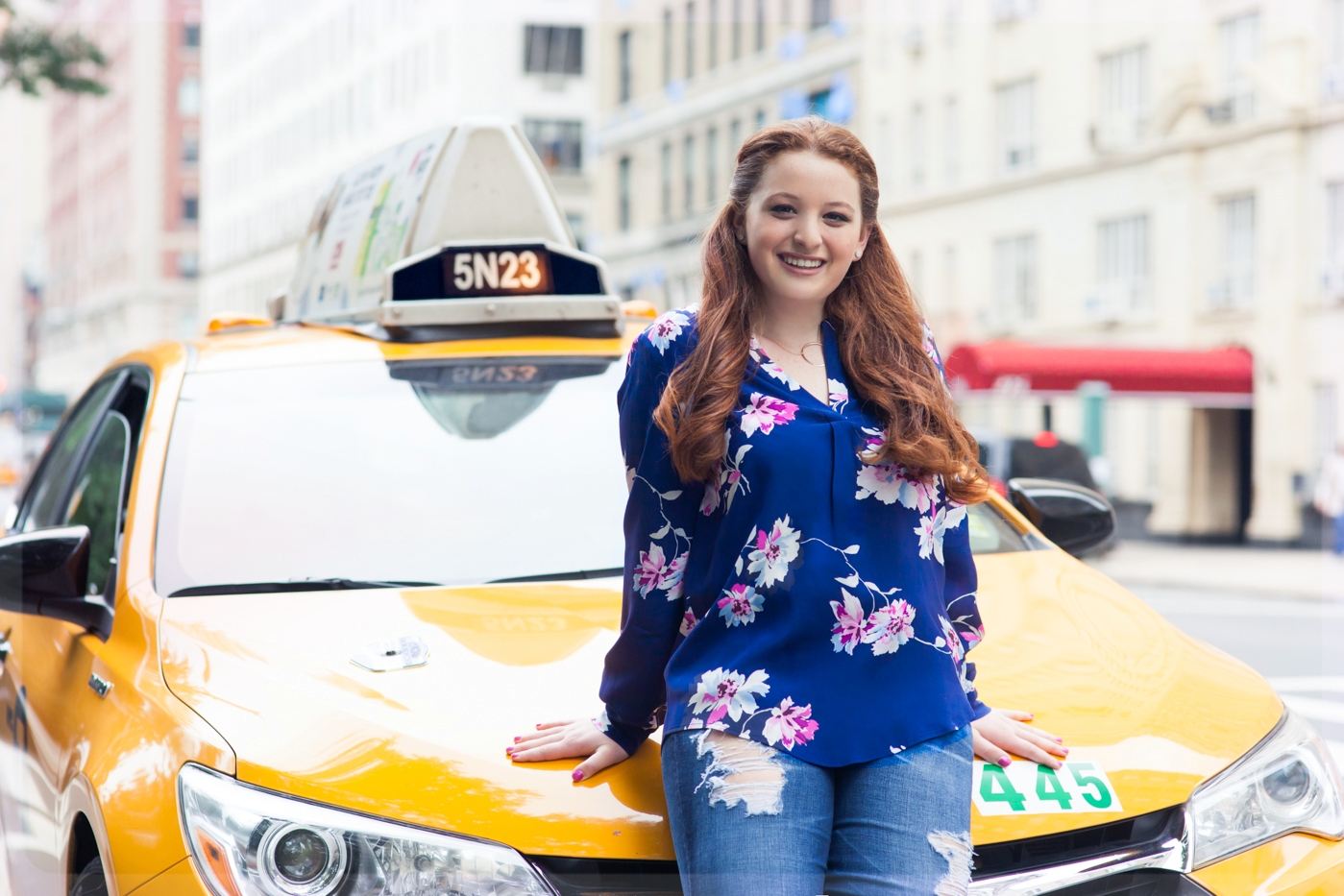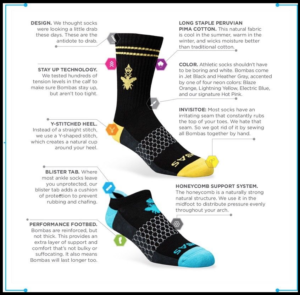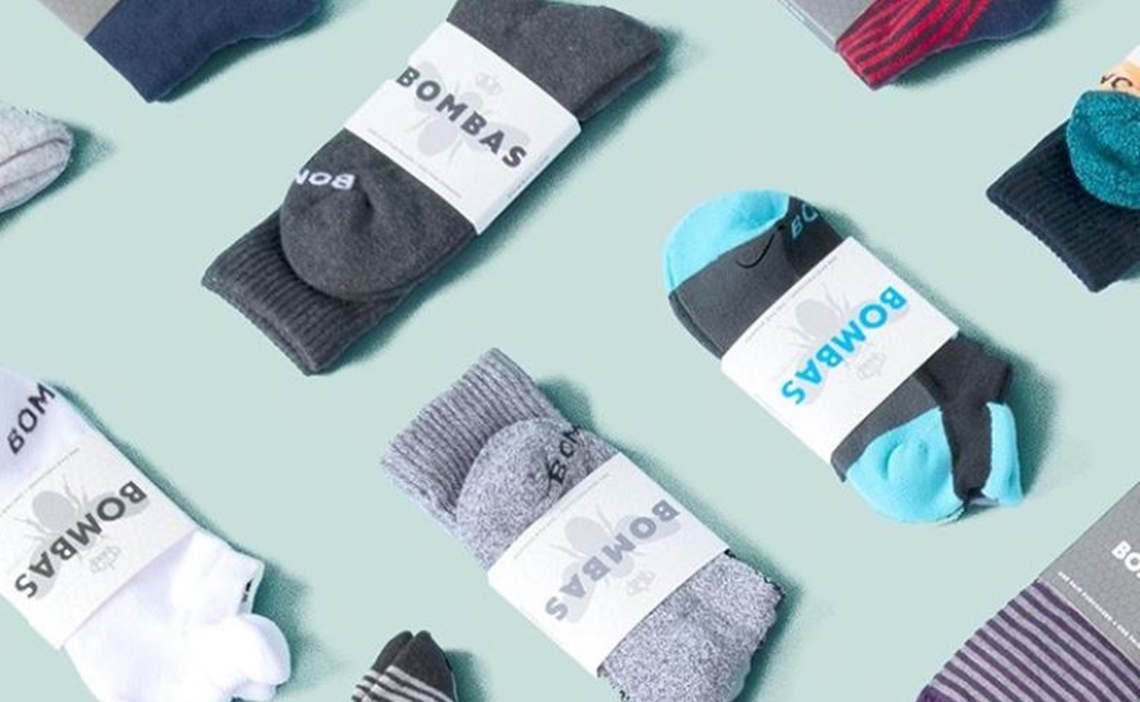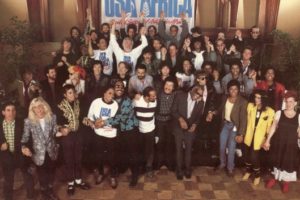Lily Born is a young girl that had a grandfather that struggled with Parkinson’s disease. He would often struggle keeping drinks still, and as a result there would be a ton of spills. Even at the young age of 8 years old she realized how much of an issue that was. She sought out to find a solution to this pain. Lily came up with the idea of a 3-legged cup that will not tip called the Kangaroo Cup. After prototyping with clay, she came up with a tripod cup design that would prevent spills from the user. At the age of 16 years old she has sold over hundreds of thousands of cups and made an impact around the world. At her age it is remarkable to have problem solving skills that would solve the pains of coping with a heartbreaking disease and more. To learn more about her visit 10 Successful Young Entrepreneurs (investopedia.com), and Lily Born | A Mighty Girl | Cusp Conference.
Archive for Helping Hands
Mikaila Ulmer: Founder of “Me & the Bees” Lemonade
Mikaila Ulmer is a 17-year-old girl who started her own lemonade business at a very young age. The business idea started after young Mikaila got stung by a bee and wanted to learn more about bees to overcome her fear of them. At age 4, she started a business by creating a very small lemonade stand. Very quickly, this turned into the business “Me & the Bees” as a result.
Mikaila is widely successful, at just age 9, she struck an $11 million distribution deal with US supermarket giants Whole Foods Market. Mikaila has also been invited to the White House twice, featured on Good Morning America, NBC News, Forbes Magazine, and Time Magazine for her entrepreneurial success. Mikaila is very busy; she juggles school, her business, and public speaking. The unique thing about her business is that 10% of her brand’s proceeds are donated to bee conservation charities. It is amazing how she used a challenge of hers (getting stung by a bee) to learn more about it and start up a profitable and charitable business.
Mikaila’s lemonade recipe is unique because it comes from her great Grandmother Helen’s flaxseed lemonade. It is fresh-squeezed, and each bottle is made with care. Her family has a huge part in helping her business thrive. As an extension to her business, Mikaila has created a “Bee-to-Z guide” for young entrepreneurs. Here, young entrepreneurs can find inspiration, business tips, and more to make their big ideas come to life. A very inspirational quote from Mikaila reads, “My generation—we’re the future,” Mikaila says. “When we grow up, we’re going to be the people who are the presidents and the leaders of the world. […] If we start at a young age making a difference, donating back, giving back, when we grow up we can do that on a larger scale.” Mikaila’s business proves that, just like the bees, you are never too small to make a difference.
The 9 Most Successful Teen Entrepreneurs in the World (careeraddict.com)
Mikaila Ulmer of Me & the Bees Lemonade | Microsoft In Culture
https://www.noamintz.com/

This young entrepreneur named Noa Mintz started a business called Nannies by Noa when she was just 12 years old in 2012. She has made numerous appearances on various television stations and channels to talk about her service and has a wide following behind her business. As of 2015 her business had a net worth of about $375,000. Her business aims to find the best nannies and babysitters for families around New York City, the Hamptons and the Tri-state area. Noa is extremely driven by her passion for helping children and their families. Friends and family close to her would say that she has a niche for matchmaking people together which has aided her in finding nannies and babysitters that are compatible with certain types of families. Her idea is great and very interesting because it gives families a platform in which they can find reliable, fun, passionate, and trustworthy nannies that parents can feel safe leaving their children with and to help care for their children when they are unable to. They do a detailed background screening and even provide some educational services for nannies and babysitters to improve their skills. She ended up hiring a trained CEO to run the business for her because working 40 hours a week was interfering with her schoolwork. That being said, she clearly cares about her education in addition to her business. When she is not engaged in work for her business or school, she is also part of an organization called The Friendship Circle which pairs teenagers with special needs children and offers mentorship for them. She demonstrates innovation by providing this service to families all over New York City and the Tri-state area, which is a very large geographic area, that has a lot of people in need of this type of service. Her story and motivation is very inspiring to me and shows me that any business is possible to create and establish no matter what age you are.
Brandon & Sebastian Martinez – Are You Kidding Socks
In 2014, 9-year-old Brandon and 7-year-old Sebastian Martinez founded Are You Kidding Socks, a sock company with a unique twist. The two kid entrepreneurs design and sell socks with unique, exciting designs. It all started with Sebastian, who loved wacky socks. By the time he was five, his grandmother had bought him over 100 pairs of colorful, fun pairs of socks. Sebastian’s mother remembers the very day she asked him, “Would you like to design your own socks?” On that day, June 25, 2013, Sebastian enthusiastically said yes.
Later that year, Sebastian began designing socks while his mother connected with a manufacturer in Guatemala to produce the designs. By 2014, Are You Kidding Socks was an established company, selling thousands of socks from the Martinez home. Sebastian was the CEO of the company, while his mother was the president. They brought on Sebastian’s older brother, Brandon, as the sales rep – due to his vibrant, outgoing personality. He was later promoted to the “Director of Sales” by his younger brother.
In recent year, the Martinez boys have made it their mission to raise awareness for national charities and organizations. Through the sales of their socks, they have raised thousands for nonprofits, such as Live Like Bella, SLAM ALS, Autism Speaks, and the American Cancer Society. They have designed specific socks that represent each cause they support.
The Martinez boys also care very deeply about local communities. They donate their time, resources, and socks to local schools and shelters during annual fundraisers and events. They also partner with local schools to host fundraisers and campaigns.
Since forming the company, the boys have received great recognition, from the mayor of Miami to interviews on CNN and Good Morning America. Sebastian and Brandon have taken a fun, simple idea and turned it into something very impactful.
A common irritant in one’s daily life is socks. While it might not be your first thought for what irritates you, many people dislike it when their socks fall down, do not provide support, cause blisters, make your feet hot, or maybe worst of all, the irritating seam that goes across the toe of socks that never seems to be in the right place at the right time.
As it turns out, in 2013, David Heath and Randy Goldberg were irritated enough with these problems that they started a company called Bombas. Heath and Goldberg were regular consumers, knowing nothing about the in’s and out’s of the sock industry, but what they did know was their own pain points. They set out to achieve two goals: design the best sock in the history of feet, and give a pair of socks to a homeless shelter with every purchase. By targeting their own pain points, they developed unique socks.
The socks are all contoured to either a left or right foot. The ankle socks have a blister tab, calf-length socks have “stay-up technology” that actually works, and their no-show socks use stay-put heel grips and contour seam construction to stay where they are supposed to. All of the styles incorporate the company’s now signature honeycomb across the mid-foot to provide addition support, a y-stitched heel to cup the heel of your foot, and a reinforced foot-bed to be longer lasting and more supportive. Health and Goldberg now have several different styles and lines of socks including dress socks, compression socks, wool socks, quarter socks, and athletic socks, as well as the standard crew, ankle, and knee high socks.
To Heath and Goldberg’s second goal, they realized that the number one most requested item from homeless shelters was socks, due to the necessity that they be new. They developed a one-for-one business model and now for ever pair of socks you buy, they donate a brand new pair to a homeless shelter in need.
In 2014, Heath and Goldberg took Bombas to Shark Tank. They were successful in getting a deal with Daymon John, and officially launch the company. Heath and Goldberg hoped to give away one million socks by 2025 but in fact, they met that goal in only two and a half years, and a mere six months later, they had given away two million pairs. At the time this post was written, according to the live counter on the Bombas website, they have donated 27,811,296 pairs of socks.
Bombas is an example of two regular guys, seeing a pain in their own lives and finding a way to solve it. Not only have they created what are arguably the best socks in history, but they have also found a way to make a huge impact in the lives of many people who are in need of an item most of us take for granted: socks.
 The Problem
The Problem
A while back on the internet I saw a picture of a young woman in tears at a restaurant table. She wasn’t on a date, she was surrounded by family. After reading the post it was clear the tears were indeed happy, not sad. For the first time in her seventeen years of living this girl was given a menu she could read; in braille.
Braigo Labs
Braigo Labs is a company which provides low cost blue tooth and internet equipped braille printers to help the visually impaired. Their goal is to help 50 million of the worlds population accomplish a task most of us take for granted. Being able to read independently is a struggle for the visually impaired. Typical braille printers cost around three thousand dollars. Braigo Labs product is sold for 82% less than competitors.
Founder
Braigo Labs is one of the most impressive entrepreneurial endeavors in existence. Its impressiveness is compounded by the age of the founder and its creation story. Shubham Banerjee is 14 years old. Braigo Labs primitive version was built with Lego Mindstorms EV3. The inspiration struck while brainstorming ideas for a seventh grade science fair project. Banjeree is not alone in his journey, as many teachers and mentors are encouraging and helping make the second version of the printer possible. Banjeree says the best advice they’ve supplied is; “Be humble,” and “Innovate for the right reasons — money is not one of them.”
Imagine a world where helping people could be as easy as searching google. Well, this is exactly what Jack Kim is attempting to do with his company Benelab. Benelab is a search engine that donates 100% of its profits to various charity organizations around the world.
During Jack’s freshman year in high school he learned how to code HTML and build websites. He thought that it was really fun, and he thought the idea of making something online would be very exciting. Unlike most people however, Jack didn’t just think about doing something, he actually went ahead and did it. He researched things like AdSense and other online money-making strategies and with this knowledge he created his very first basic search engine. This proved to be a small success for Jack and his simple search engine ended up providing him with a monthly income of $200-$300 with a relatively small group of 2000 visitors a month. This was certainly not an extraordinary amount of wealth, but it did show Jack that search engines had the potential to create large sums of income with a relatively small user base, and this is what led him to continue creating new search engines.
Jack created another search engine that same year called Benesearch which was a search engine dedicated to donating 100% of its profits to charity. However, the search engine still had a long way to go before it would be considered a success, and Jack began giving up on the project. That is when Jack attended a business program at Stanford where he was taught the basics of entrepreneurship, but more importantly, he found professors there that motivated him to give his idea another shot. Jack reworked his search engine and renamed it Benelab and began working with a team made up entirely of motivated kids like him.
Today Benelab has made some traction in the search engine industry seeing about 1,000 searches a day, nothing compared to sites like google, but it is a good start. With this small success they have been able to give hundreds of dollars to various charities like World Concern. Although this is great, Jack is still ambitious for more and has made it a goal to raise $100,000 through Benelab before he graduates from highschool.
Benelab is a very inspiring story that has a lot of important lessons for entrepreneurs. One important point this story highlights is the ability of anyone to turn their skills and passions into an idea that has the potential to affect the world. Jack was just a 16-year-old kid that only knew basic programming and had a love of charity work, but he was able to turn these things into a successful startup. The other important lesson this teaches us is that idea creation/development truly is a process. Even though Benelab is the same at its core to Jack’s original search engine idea, there were many things that had to change before the company became what it is today, in fact Jack had to totally revamp the engine before it began to see any success and even beyond that his team of teenagers made certain aspects of development challenging. Despite these challenges, Jack and the Benelab team continued to persist and eventually they saw some success. Jack and Benelab both certainly have a long way to go, but with all the lessons he is learning on this journey, there is no doubt that the value created through this process will be with Jack and his team for the rest of their lives.
Troy Kumprey created a Ladder Lockdown saddle after one of his employees fell from a ladder while working. Kumprey saw the dangers that normal ladders have so he wanted to create something that would make ladders safer and guarantee his employees would return to their families each night. So Kumprey created a versatile setup that accommodates extension ladders up to seven meters and most A-frames up to 1.8 meters. Ladder Lockdown is adaptable to hard soft surfaces, from concrete to wood to snow. Ladder Lockdown reduces lateral movement. Kumprey saw a problem and need that should be filled, he took a problem and created a solution. Kumprey also found a niche market for his product; construction, homeowners, and firefighters can relate to ladder safety. Ladder Lockdown saves lives and forever changed how ladders are used. Kumprey turned a dangerous tool into a safer for everyone to use. Here is a link to Ladder Lockdown website to learn more about the product, mission, and Troy Kumprey’s story:
We Are the World
By: Daniel Colflesh
Music. What a way to help people. In 1985, a song titled “We Are the World” was born. It was written by Michael Jackson and Lionel Richie (with arrangements by John Barnes) and produced by Quincy Jones. It is one of the fewer than 30 all-time physical singles to have sold at least 10 million copies worldwide. Not to mention, a lot of famous artists (37 artists) were featured on this track, including: Billy Joel, Bob Dylan, John Oates, Daryl Hall, Tina Turner, The Jackson 5, Diana Ross, Lionel Richie, Bruce Springsteen, Michael Jackson and Stevie Wonder. They all came together to produce this masterpiece of a song that would rake in $63 million (today, $141 million) for the humanitarian aid in Africa and the United States.
The United Support of Artists for Africa is best known for its recording of “We Are the World” and the “Hands Across America” event in 1986. In these 33 years, USA for Africa has raised more than $100,000,000 to help ease the pain an poverty in Africa and the United States. The main goal of this organization is to help people in poverty and give them a chance to have a better life. They have clearly raised a lot of money for the people in Africa and the United States.
One thing that I think is really awesome is that a bunch of different artists came together (regardless of their skin color, religion, or anything biased) and made this song that would impact a lot of people. I think that is is a really amazing thing that people can come together through a common interest (music) and create something that touches so many people’s hearts, minds and emotions. Even though that USA for Africa is essentially a non-profit organization, they have created such a great way to bring revenue to help people in such a positive way. One day, I hope that I can find a way to help people through making music. That would mean so much to me and be one of the best things that I could do. It would bring so much joy and happiness to me and would be a great goal of mine. Hopefully one day, I can help people through music.
Websites used:
https://en.wikipedia.org/wiki/We_Are_the_World
Copyright © 2025 All Rights Reserved


